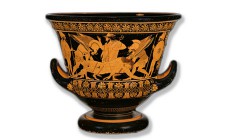Measuring the international market in illicit cultural objects
Damage assessment surveys of cultural sites and scholarly analyses of published artefact corpora provide continuing evidence of widespread looting and traffic of cultural objects. However, because the trafficking typically involves clandestine excavation or theft and trade it is difficult to arrive at reliable quantitative estimates of the size of the illicit market (in terms of material volume or monetary value) as a whole or in a particular class of object, or to provide descriptions of how the market is structured. This lack of quantitative description means that it is difficult locally or globally to demonstrate the severity and urgency of associated problems, to design and agree suitable policy countermeasures, or to assess the efficacy of any implemented regulation. In this field then, unusually, relatively basic questions of market size and shape are groundbreaking in scope, simply because the statistics necessary to answer those questions do not currently exist. We propose to rectify this situation by considering and triangulating all available sources of data on market activity.
There are in particular two good sources of data that we believe have been under-utilized for quantitative analyses of the market in cultural objects. First, there are the sales catalogues of the major auction houses, which offer a comprehensive and historical source of quantifiable data, recording details of object type, material, age, size and decoration, together with estimated and actual price. While auction catalogues have occasionally been used to estimate the overall value or volume of the antiquities market, there has been no attempt to utilize all the data they contain to answer more targeted questions about market structure and policy effectiveness. Second, there are museum acquisitions records, which are published annually by major museums. These records contain details of object type, material, age, size and decoration, and indicate whether the objects were acquired by purchase or gift. We will use data available from both these sources to establish the size and structure of the market, and investigate the possible use of these data for the assessment of public policy. We will address the following broad questions:
- How large is the market, and how is it structured, in terms of material volume and monetary value?
- Can the incidence or severity of looting and illicit trade be inferred from fluctuations over time in the volume or price of material on the market?
- Can the effectiveness of policy countermeasures be inferred from fluctuations over time in the volume or price of material on the market?
These three overarching questions will be broken down and addressed through a series of controlled case studies, examining the markets in cuneiform tablets and other inscribed artefacts from Iraq and neighbouring countries, Greco-Roman artefacts, Central and South American Preconquest artefacts, South Asian stone sculpture, and West African terracotta sculpture; and within those regionalized markets comparing data for countries where known regulatory interventions have occurred to those for countries where no interventions have occurred. We envisage that this research will have four major outcomes:
- It will provide researchers and investigators with the tools needed to quantify the traffic in cultural objects and provide a direct route into evaluating the suitability and effectiveness of regulatory interventions;
- It will complement and assess other descriptions of the market in cultural objects arrived at using different methodologies, thereby allowing a more sophisticated, evidence-based understanding of the market;
- This more sophisticated understanding will stand in broader comparative perspective to other illicit markets;
- It will open new horizons and opportunities for next generation research.
